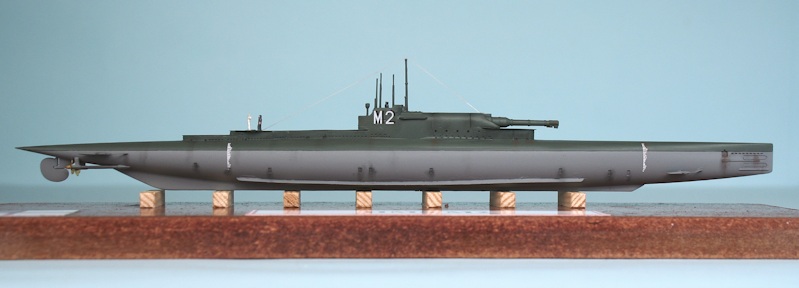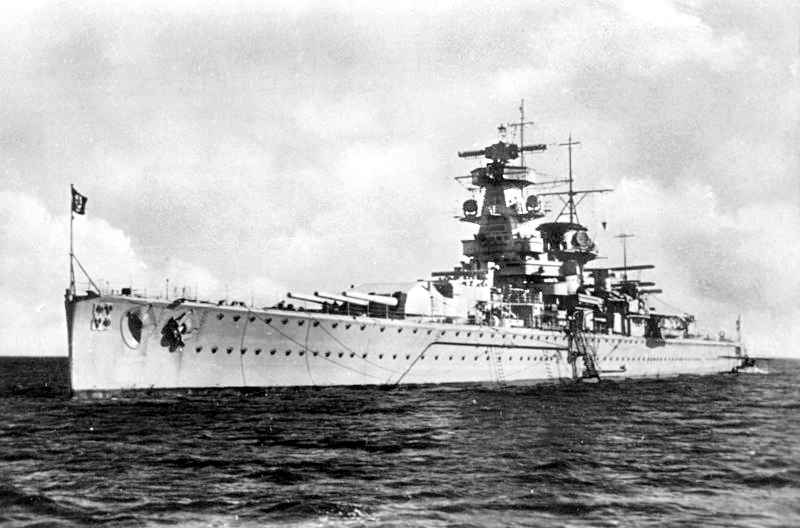|
Source: Guardian UK https://www.theguardian.com/commentisfree/2024/mar/01/sweden-nato-unprepared-vulnerable-attack Sweden is joining Nato, but it’s hopelessly unprepared for war Martin Gelin Martin Gelin is a Swedish journalist based in Paris and New York, and the author of the forthcoming book Rules of Attraction: Why Soft Power Matters in Hard Times Fri 1 Mar 2024 07.00 GMT The Russian invasion of Ukraine in February 2022 came as a rude awakening for Sweden. Across the country people suddenly realised that national security vulnerabilities were everywhere. The entire public transit rail network in Stockholm, for example, is operated by MTR, a Hong Kong-based company with ties to the Chinese Communist party... Sweden is set to join Nato this year... This is a historic shift: after more than two centuries of peace, neutral Sweden will have to rapidly adjust to a belligerent new world. ... Too often, the private companies which took over formerly public infrastructure have prioritised profits over safety, and many of the most vulnerable coastal regions in Sweden lack basic assets for civil defence, such as shelters. Recent reports by the Swedish Defence Research Agency (FOI), and independent analysis by trade unions and business groups, suggest countless examples of conflicts of interest between long-term national security and the short-term interests of businesses and municipal governments eager to bring new jobs to post-industrial towns. For the most part, this conflict has been resolved by ignoring the national security concerns... ... In Timrå, the municipal government’s security official Johanna Hillgren recently resigned over the city’s decision to allow a Chinese battery factory to be sited right next to the Midlanda airport, which has been deemed a critical national security asset. Almost a quarter of all new wind turbines in Sweden since 2017 have been built by Chinese companies, which could jeopardise Swedish energy supplies in a scenario of increasing EU-China tensions. “Sweden is still about 10 years behind when it comes to realising that China’s ambitions are global,” says Oksanen. Decades of austerity and deregulation have also left Sweden with a severe lack of preparedness and civic infrastructure... ... There is also a lack of reliable defence shelters. Huge new facilities, such as the most expensive hospital in Swedish history, Nya Karolinska, in the north of Stockholm, have been built without a single space for shelter. The government agency tasked with inspecting the national network of 64,000 shelters – with space to accommodate 7 million people – currently has just two employees. The pair are supposed to visit all 64,000 locations... ... there has been a mostly bipartisan consensus about selling off public assets, while eagerly inviting Chinese businesses to invest in factories and critical infrastructure. ... But increased funding for civil defence and the military is often undermined by anachronistic regulations, or decentralised systems involving multiple private actors and local communities. The national rail network, for example, is operated by 60 different corporations. The FOI is not allowed to test its recently acquired defence drones outdoors, but instead has to hire a private sports stadium to do trial runs. ... A further symptom might be a particular Swedish vulnerability to external propaganda, disinformation and hybrid warfare... ... China has also successfully tempted “alternative media” to share Beijing’s narratives with gullible Swedes....
|
|
|
|

|
| # ? May 27, 2024 06:17 |
|
Please read that book about how this is all the result of Swedish social democracy being defeated and explain it to me because I have no idea why the bork borks thought this was a good idea while Switzerland and Austria had more of a connection to their national identity.
|
|
|
|
lmao Cuba had a spy on the National Security Council during the Clinton admin https://en.wikipedia.org/wiki/Manuel_Rocha
|
|
|
|
Free Rocha
|
|
|
|
Morbus posted:The salient features of most analyses, wargames, etc. are: Yeah I'm kinda skeptical that China could successfully launch an amphibious invasion of Taiwan just because they're really loving hard, but that doesn't mean they can't pressure them any other way or bloody the US along the way
|
|
|
|
They don’t have to, they just have to blockade and bombard Taiwan.
|
|
|
|
DJJIB-DJDCT posted:Please read that book about how this is all the result of Swedish social democracy being defeated and explain it to me because I have no idea why the bork borks thought this was a good idea while Switzerland and Austria had more of a connection to their national identity.
|
|
|
|
DJJIB-DJDCT posted:Please read that book about how this is all the result of Swedish social democracy being defeated and explain it to me because I have no idea why the bork borks thought this was a good idea while Switzerland and Austria had more of a connection to their national identity. scandinavian countries are a type of barnacle that grows on empires
|
|
|
|
Jon Pod Van Damm posted:Y'all don't quote me on this. You start out in 1980 by saying, "SUBMARINES, INVASION, SUBMARINES". By 2000, you can't say "SUBMARINES"—that hurts you. Backfires. So you say stuff like ISLAMIC TERRORISM, DEMOCRACY and all that stuff. You're getting so abstract now [that] you're talking about SPREADING DEMOCRACY, and all these things you're talking about are totally political things and a byproduct of them is [that] Socialist parties get hurt worse than Bourgeois parties. And subconsciously maybe that is part of it. I'm not saying that. But I'm saying that if it is getting that abstract, and that coded, that we are doing away with the threat inflation problem one way or the other. You follow me—because obviously sitting around saying, "We want to DEMOCRACY this", is much more abstract than even the ISLAMIC TERRORISM thing, and a hell of a lot more abstract than "SUBMARINES, INVASION". So, any way you look at it, FEAR is coming on the back-burner.
|
|
|
|
Jon Pod Van Damm posted:Y'all don't quote me on this. You start out in 1980 by saying, "SUBMARINES, INVASION, SUBMARINES". By 2000, you can't say "SUBMARINES"—that hurts you. Backfires. So you say stuff like ISLAMIC TERRORISM, DEMOCRACY and all that stuff. You're getting so abstract now [that] you're talking about SPREADING DEMOCRACY, and all these things you're talking about are totally political things and a byproduct of them is [that] Socialist parties get hurt worse than Bourgeois parties. And subconsciously maybe that is part of it. I'm not saying that. But I'm saying that if it is getting that abstract, and that coded, that we are doing away with the threat inflation problem one way or the other. You follow me—because obviously sitting around saying, "We want to DEMOCRACY this", is much more abstract than even the ISLAMIC TERRORISM thing, and a hell of a lot more abstract than "SUBMARINES, INVASION". So, any way you look at it, FEAR is coming on the back-burner. 
|
|
|
|
Jon Pod Van Damm posted:Y'all don't quote me on this. You start out in 1980 by saying, "SUBMARINES, INVASION, SUBMARINES". By 2000, you can't say "SUBMARINES"—that hurts you. Backfires. So you say stuff like ISLAMIC TERRORISM, DEMOCRACY and all that stuff. You're getting so abstract now [that] you're talking about SPREADING DEMOCRACY, and all these things you're talking about are totally political things and a byproduct of them is [that] Socialist parties get hurt worse than Bourgeois parties. And subconsciously maybe that is part of it. I'm not saying that. But I'm saying that if it is getting that abstract, and that coded, that we are doing away with the threat inflation problem one way or the other. You follow me—because obviously sitting around saying, "We want to DEMOCRACY this", is much more abstract than even the ISLAMIC TERRORISM thing, and a hell of a lot more abstract than "SUBMARINES, INVASION". So, any way you look at it, FEAR is coming on the back-burner.
|
|
|
|
fizziester posted:Source: Guardian UK for a article about NATO they sure seem concerned about a country on the other side of the world with no hostile actions against any of the alliance states.
|
|
|
|
fizziester posted:Sweden is set to join Nato this year... This is a historic shift: after more than two centuries of peace, neutral Sweden will have to rapidly adjust to a belligerent new world.
|
|
|
|
Jon Pod Van Damm posted:Y'all don't quote me on this. You start out in 1980 by saying, "SUBMARINES, INVASION, SUBMARINES". By 2000, you can't say "SUBMARINES"—that hurts you. Backfires. So you say stuff like ISLAMIC TERRORISM, DEMOCRACY and all that stuff. You're getting so abstract now [that] you're talking about SPREADING DEMOCRACY, and all these things you're talking about are totally political things and a byproduct of them is [that] Socialist parties get hurt worse than Bourgeois parties. And subconsciously maybe that is part of it. I'm not saying that. But I'm saying that if it is getting that abstract, and that coded, that we are doing away with the threat inflation problem one way or the other. You follow me—because obviously sitting around saying, "We want to DEMOCRACY this", is much more abstract than even the ISLAMIC TERRORISM thing, and a hell of a lot more abstract than "SUBMARINES, INVASION". So, any way you look at it, FEAR is coming on the back-burner.
|
|
|
|
I was just reading a paper on airborne ASW these days, and discovered that, other than the Russians and Chinese putting SAMs on the masts or periscopes or whatever, no submarines today have a defence against aircraft. I realize that stealth is their best defence, and nuclear subs never need to surface, diesel boats use snorkels. However, in the Taiwan Strait, the water is so shallow it would not be difficult to envision a situation where Chinese aircraft very quickly detect the presence of a US sub and start dropping sonar buoys, in which case you would think someone has thought of something the sub could do before depth charges and torpedoes start getting dropped. I bring this up because, probably due to the ranges involved in the Pacific, Japanese subs were rarely caught on the surface - it was nothing like the Bay of Biscay - and when they were, the cruiser subs were often able to drive off the patrol plane with their big AAA batteries. If you want to talk about a submarine concept that did not work well, though again, it was understandable for the 1920s, it would have to be the gun cruiser.   Both the British M1 and French Surcouf were lost to collisions, which is probably worth looking into. Any submarine of the time (and honestly now) would have been sunk by a collision, but it's strange that this was the fate of both of these particularly large ones. I would guess slow diving speed was a contributing factor?  X-1 had a lot of problems from trying to jam all of those systems into the size of a submarine hull, given the technology of the day. "She was 'of more value to the enemy than ourselves'", with a string of major engine failures, and problems with the auxiliary engines and HP air compressors. "Internal arrangements not very satisfactory because of overcrowding with auxiliary machinery. Accommodation is cramped, ventilation poor and ship suffers from humidity, diving arrangements good, electrics satisfactory except for dampness problems. Inadequate battery ventilation, armament satisfactory, main and auxiliary propelling engines the least satisfactory feature of X1" This is a problem, because the main asset of a cruiser is the ability to cruise for extended periods, it's why they're so big and expensive. A big, expensive ship that can't cruise independently of the fleet is worthless for its intended role. Putting large guns in a submarine (which is much smaller than a surface ship) also created problems on all 3 of these vessels. In the case of X-1, "A very large bridge was occupied mainly by gunnery control gear including an upper control room, a range finder room and a director tower. The conning tower took second place abaft these gunnery spaces." Which makes sense, I mean, in all three instances, we're talking about massive guns, in turrets, that are water and pressure proof, on top of a tiny hull. "Four in number 5.2-inch guns in twin mountings were sited one mounting forward of the bridge and the other about 50ft aft of the bridge. A circular gun trunk of about 4½ft diameter ran from the mounting to the magazine directly below in the lower half of the pressure-hull. A 10ft diameter-working chamber surrounded the gun trunk between the gun deck and the top of the pressure hull. Each magazine carried 100 rounds of ammunition per gun and shell compensating tanks were fitted each side abreast each magazine." "The gunnery control arrangements occupied most of the bridge space. From the pressure hull a hatch led into an upper control room on the top of which was the director tower extending to about bridge canopy height. The cover of the director tower could be raised vertically two feet and when closed was obviously watertight to full diving depth. A second hatch from inside the pressure hull led to a range finder room alongside the upper control room and a 9ft range finder was fitted on the bridge aft of the director tower. The conning tower was abaft these gunnery spaces and access was provided from the conning tower to the gunnery rooms." The problem with all of this is that, honestly, by the time they entered service the torpedo was a much better weapon for attacking merchant ships than a naval gun. Not for surface ships, but for submarines. The reasons are numerous, but one of them is pretty simple - merchant ships began to be armed with guns for self defence in the Great War. Okay, well obviously that's no problem to a surface raider. A 3.7 inch gun was not going to do anything to Graf Spee  However what would be minor damage to a cruiser would be fatal to a cruiser submarine because return fire would penetrate the pressure hull. Hole in pressure hull = can't submerge. Can't submerge = the most powerful submarine, when on the surface, is weaker and more fragile than a small destroyer. So, the Japanese decision to build cruising submarines with reliable machinery, which made them big, and using some of that space for seaplanes, was much smarter than using that extra space for guns, as the French and British tried to do.
|
|
|
GlassEye-Boy posted:for a article about NATO they sure seem concerned about a country on the other side of the world with no hostile actions against any of the alliance states. A non white country having any power or being able to resist or outcompete the white countries is practically an act of war, since it will inevitably cause the white countries to start a war in order to stop this from continuing.
|
|
|
|
Jon Pod Van Damm posted:Y'all don't quote me on this. You start out in 1980 by saying, "SUBMARINES, INVASION, SUBMARINES". By 2000, you can't say "SUBMARINES"—that hurts you. Backfires. So you say stuff like ISLAMIC TERRORISM, DEMOCRACY and all that stuff. You're getting so abstract now [that] you're talking about SPREADING DEMOCRACY, and all these things you're talking about are totally political things and a byproduct of them is [that] Socialist parties get hurt worse than Bourgeois parties. And subconsciously maybe that is part of it. I'm not saying that. But I'm saying that if it is getting that abstract, and that coded, that we are doing away with the threat inflation problem one way or the other. You follow me—because obviously sitting around saying, "We want to DEMOCRACY this", is much more abstract than even the ISLAMIC TERRORISM thing, and a hell of a lot more abstract than "SUBMARINES, INVASION". So, any way you look at it, FEAR is coming on the back-burner. hey now, that submarine bit is a conspiracy theory and shouldn't be platformed  just like the, uh, *squints at wikipedia* the existence of a deep state in the us
|
|
|
|
|
Though I undermine my thesis, a little, because the Soviets revived the concept in the late 50's with cruise missile submarines, and while they were also large and ungainly, they were probably the number one threat at sea at the time. Instead of surfacing to use guns, they'd surface to fire cruise missiles, either at shore installations or carrier groups, and they were also excellent sea going vessels with wonderful cruising characteristics. Ugly as sin, but charming in a way    The difference, if it needs to be said, is the range of a SS-N-3 Shaddock compared to a 1920's naval gun. DJJIB-DJDCT has issued a correction as of 17:57 on Mar 1, 2024 |
|
|
|
If I were the USN right now I'd be looking at the Red Sea situation and seriously considering a semi-submersible surface combatant or arsenal ship given how much poo poo surface vessels are going to eat when faced with current-gen anti ship ballistic missiles, but then I'm not paid the big bucks to buy ships that melt in seawater
|
|
|
|
DJJIB-DJDCT posted:I just saw a book literally on that subject, almost exactly, but I can't remember the title or publisher. if you spot it again, would love to know SMEGMA_MAIL posted:Imperial Life in the Emerald City is a good read though it was written in 06 picked this one up and started it, great so far, thanks for the rec BULBASAUR posted:From family there, the ruling party and many of the institutions are considered to be in bed with Iran. I'm not sure of the politics of how this happened, but Iran has a much stronger influence there than the Americans. I have also heard this - a lot has happened over 2 decades but for some reason, I’m having a really hard time finding non Atlantic Council type books/analysis on this topic. the best I’ve read has been the Army colleges own massive retrospective they released
|
|
|
|
DJJIB-DJDCT posted:Though I undermine my thesis, a little, because the Soviets revived the concept in the late 50's with cruise missile submarines, and while they were also large and ungainly, they were probably the number one threat at sea at the time. Instead of surfacing to use guns, they'd surface to fire cruise missiles, either at shore installations or carrier groups, and they were also excellent sea going vessels with wonderful cruising characteristics. i love it, it's like something out of a pulp magazine or an early 80s space-is-an-ocean anime
|
|
|
|
The Oldest Man posted:If I were the USN right now I'd be looking at the Red Sea situation and seriously considering a semi-submersible surface combatant or arsenal ship given how much poo poo surface vessels are going to eat when faced with current-gen anti ship ballistic missiles, but then I'm not paid the big bucks to buy ships that melt in seawater It's better to just build many cargo ships, transports, tankers and oilers, and many cheap escorts and escort carriers, and accept that you'll have major losses in a major war. It's just that doing so is so antithetical to the political economy that exists now it's really hard to express.
|
|
|
|
DJJIB-DJDCT posted:It's better to just build many cargo ships, transports, tankers and oilers, and many cheap escorts and escort carriers, and accept that you'll have major losses in a major war. I'm not talking about a major war, I'm talking about what happens if you can't do imperialism anymore because the locals can wipe out your capital ships at will now
|
|
|
|
The Oldest Man posted:I'm not talking about a major war, I'm talking about what happens if you can't do imperialism anymore because the locals can wipe out your capital ships at will now Well, you'd be looking at cruisers and gunboats, and we have historical antecedent. The Royal Navy accounted for 40% of the state budget around 1900, and a huge portion of that cost was maintaining ships on foreign stations. The problem is that the United States basically can't levy taxes, so can't maintain that sort of navy. And again, while cruisers were expensive, most of the expense was machinery. They were not expected to be particularly formidable ships, having 7 naval guns with shielded mounts was a bit on the heavy side. Gunboats were similarly not particularly heavily armed, and were without the expensive machinery. In both cases, you need a naval presence, not by all-powerful warships that can accomplish any mission, but for routine duties, landing detachments, boarding, showing the flag, making calls at ports etc. Really, if you think about it, USGC cutters would be the ideal ship for the US to maintain naval power. They would need to build them by the hundreds, but ships with comfortable accommodations that can cruise for long periods and are better armed than a merchantman or pirate skiff are really all that is required. OHP frigates would be right up there in the running too. Imperialism is boring and logistical, and this idea of adding some flash with insanely complicated and expensive tools is self-defeating. DJJIB-DJDCT has issued a correction as of 18:21 on Mar 1, 2024 |
|
|
|
Jon Pod Van Damm posted:Y'all don't quote me on this. You start out in 1980 by saying, "SUBMARINES, INVASION, SUBMARINES". By 2000, you can't say "SUBMARINES"—that hurts you. Backfires. So you say stuff like ISLAMIC TERRORISM, DEMOCRACY and all that stuff. You're getting so abstract now [that] you're talking about SPREADING DEMOCRACY, and all these things you're talking about are totally political things and a byproduct of them is [that] Socialist parties get hurt worse than Bourgeois parties. And subconsciously maybe that is part of it. I'm not saying that. But I'm saying that if it is getting that abstract, and that coded, that we are doing away with the threat inflation problem one way or the other. You follow me—because obviously sitting around saying, "We want to DEMOCRACY this", is much more abstract than even the ISLAMIC TERRORISM thing, and a hell of a lot more abstract than "SUBMARINES, INVASION". So, any way you look at it, FEAR is coming on the back-burner.
|
|
|
|
Very funny that those were US and British submarines, by the way.
|
|
|
|
thought of submarines and remembered this story. hehe How did a $3 billion US Navy submarine hit an undersea mountain? www.cnn.com - Fri, 05 Nov 2021 posted:Some submariners call the USS Connecticut the luxury sports car of submarines. It’s a $3 billion piece of American military hardware that’s fast and outfitted with the latest electronic gadgetry only available when price is not a consideration. funny stories https://en.m.wikipedia.org/wiki/USS_Hartford_grounding https://en.m.wikipedia.org/wiki/USS_Hartford_and_USS_New_Orleans_collision
|
|
|
|
The Navy has a peculiar attitude to fuckups : despite the fact that a contributing factor to the grounding was the fact that the captain had assumed command weeks before the cruise and therefore couldn't have been up to speed, they still relieved him of command. Being commanding officer of a ship seems to be a real make or break moment of any senior naval career.
|
|
|
|
Noosphere posted:Being commanding officer of a ship seems to be a real make or break moment of any senior naval career. lol I know you're being sincere but that's a very funny observation
|
|
|
|
DJJIB-DJDCT posted:Well, you'd be looking at cruisers and gunboats, and we have historical antecedent. The Royal Navy accounted for 40% of the state budget around 1900, and a huge portion of that cost was maintaining ships on foreign stations. At the end of the day, imperialism and colonialism both work because the imperial or colonial state can wield a significant military advantage over the target. My point here is that these extractive economics stops working when you roll up to a nice juicy resource-rich country with a lower level of economic development than yours to steal their poo poo and/or land and despite the economic disparity between you and them, their weapons beat yours.
|
|
|
|
The US levies the expenses on its own citizens with min maxing the cost of every commodity, good, and service. They call it 'inflation'. Sooner you figure out your enemies are all here the better off you'll be, and we'll solve this all here, instead of somewhere foreign.
|
|
|
|
HouseofSuren posted:The US levies the expenses on its own citizens with min maxing the cost of every commodity, good, and service. They call it 'inflation'. I mean keep in mind FF here would be perfectly happy to crank the gears of empire if they still worked, it's literally his job
|
|
|
|
The Oldest Man posted:I mean keep in mind FF here would be perfectly happy to crank the gears of empire if they still worked, it's literally his job he would drop the bomb if ordered to
|
|
|
|
DJJIB-DJDCT posted:lol I know you're being sincere but that's a very funny observation It does come off as extremely naïve. But in all these cases, those on the rungs above captain of a ship never face any consequence for their part in the fiasco, like for example setting an unreasonable op tempo, or letting manpower shortages get to the point where all crews are exhausted. So yeah, if you survive your command without any bad luck, you can fly your desk to a guaranteed retirement and cushy MIC job.
|
|
|
|
Noosphere posted:It does come off as extremely naïve. But in all these cases, those on the rungs above captain of a ship never face any consequence for their part in the fiasco, like for example setting an unreasonable op tempo, or letting manpower shortages get to the point where all crews are exhausted. So yeah, if you survive your command without any bad luck, you can fly your desk to a guaranteed retirement and cushy MIC job. captaining a ship is a suckers game these days, much better to get in on that naval special warfare grift
|
|
|
|
Noosphere posted:The Navy has a peculiar attitude to fuckups : despite the fact that a contributing factor to the grounding was the fact that the captain had assumed command weeks before the cruise and therefore couldn't have been up to speed, they still relieved him of command. Its real the buck stops here stuff, unless you shoot down the airliner of a country we don't like, than its medals and never apologizing
|
|
|
|
is there any reason a sub couldn't have slbms that are anti-ship or just conventional cruise missiles? if they can haul around a few dozen tridents the size of semi-trucks it seems like they could carry a bunch of smaller conventional missiles and just go ham firing off tomahawks. a little napkin math shows an ohio sub fitted for tomahawks could carry about 890 god damned missiles lmao
|
|
|
|
|
KomradeX posted:Its real the buck stops here stuff, unless you shoot down the airliner of a country we don't like, than its medals and never apologizing If you gently caress up, be sure to do so in such a publicly embarrassing way that the US is forced to pretend it didn't happen
|
|
|
|
Hatebag posted:is there any reason a sub couldn't have slbms that are anti-ship or just conventional cruise missiles? if they can haul around a few dozen tridents the size of semi-trucks it seems like they could carry a bunch of smaller conventional missiles and just go ham firing off tomahawks. a little napkin math shows an ohio sub fitted for tomahawks could carry about 890 god damned missiles lmao It was trialed in the 90's iirc but the retirement of the older subs and the Seawolf class never entering service in the numbers that had been hoped for led to attack subs taking over the Tomahawk mission. StashAugustine posted:If you gently caress up, be sure to do so in such a publicly embarrassing way that the US is forced to pretend it didn't happen Wikipedia: TWA Flight 800 conspiracy theories
|
|
|
|

|
| # ? May 27, 2024 06:17 |
|
Hatebag posted:is there any reason a sub couldn't have slbms that are anti-ship or just conventional cruise missiles? if they can haul around a few dozen tridents the size of semi-trucks it seems like they could carry a bunch of smaller conventional missiles and just go ham firing off tomahawks. a little napkin math shows an ohio sub fitted for tomahawks could carry about 890 god damned missiles lmao There are four Ohio class subs that are exactly this. They also removed a pair of ballistic missile tubes for secret squirrel airlock stuff.
|
|
|
































